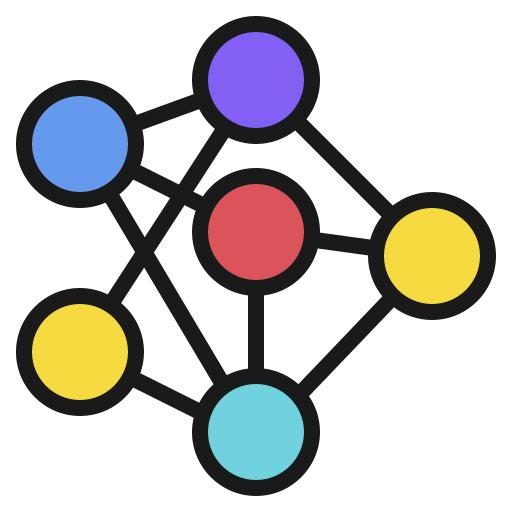Tech recruitment agencies are pivotal in connecting technology companies with top talent. The increasing demand for specialised IT skills requires recruitment agencies to establish a well-structured operating model to streamline their operations and meet the expectations of both clients and candidates.
For a mid-sized tech recruitment agency with 200 staff, the key processes must be robust, scalable, and highly efficient to handle the complexity of matching the right talent with the right job opportunities.
As a consultancy specialising in designing operating models, we break down the primary (or level 0) processes within a tech recruitment agency, ensuring they are mutually exclusive and collectively exhaustive (MECE) to create a comprehensive understanding of how these organisations operate. This breakdown ensures that the processes cover all business areas without overlap.
Client acquisition and relationship management
- The recruitment agency’s first step is acquiring clients—tech companies needing specific talent. This step includes building a pipeline of potential clients, creating proposals, conducting initial meetings, and finalising contracts.
- Sales and business development involves identifying potential clients (tech companies) through market research, networking, and outbound sales efforts. Business development managers generate leads and engage with new clients.
- Contract negotiation and onboarding occur once the recruitment agency identifies potential clients. The recruitment agency negotiates terms, pricing, and contractual obligations before onboarding the client into the system.
- The ongoing management of client relationships is crucial for long-term success. This process includes periodic check-ins, gathering feedback, and ensuring client satisfaction with recruitment results and staff placed on client projects, which can be permanent or temporary assignments.
- Dedicated account managers serve as clients’ contact points, acknowledging all client recruitment needs.
Talent sourcing and candidate acquisition
- Tech recruitment agencies often need to fill highly specialised roles, so candidate sourcing is critical.
- Active sourcing includes identifying candidates through job boards, online recruitment platforms, social media, and professional networks like LinkedIn.
- Passive sourcing involves attracting passive candidates who are not actively looking for a new job but could be a good fit for the agency’s client. This approach requires outreach through networking, social media, or events to bring passive candidates into the recruitment pipeline.
- Attracting top talent is a key challenge in a highly competitive tech market. This includes marketing the agency as a trusted recruitment partner for tech professionals and effectively promoting job openings.
- Branding and advertising involve marketing campaigns to promote available job opportunities and the agency’s expertise in placing tech talent.
- Referral programmes encourage candidates to refer other potential candidates and are often a powerful tool for talent acquisition.
Candidate evaluation and selection
- Once the recruitment agency identifies the candidates, the recruiters must evaluate them to ensure they match the job requirements.
- The initial screening is the first evaluation stage, and it determines whether the candidate has the relevant experience and qualifications.
- Resume screening and shortlisting enable recruiters to review CVs and identify candidates who meet the minimum job requirements. ATS (Applicant Tracking Systems) can automate parts of this process. These systems can automatically decline applicants based on predefined rules, which is helpful when large volumes of applicants per role occur.
- After initial screening, selected candidates undergo interviews with the agency or directly with the client.
- Phone or video screening involves conducting initial phone or video interviews to assess the candidate’s fit with the role in terms of skills, culture, and expectations.
- Technical assessments in tech recruitment enable candidates to undergo coding tests or technical evaluations to ensure they meet the specific technical skills required for the role. Those can be, for example, Python development tests or business processes supported by technological enablement.
Client-candidate matching
- Once the agency has a pool of qualified candidates, it presents a shortlist to the client. Client communication includes account managers liaising with clients to discuss shortlisted candidates, their profiles, and the rationale behind each selection.
- Feedback is collected from the client to refine the selection process and improve candidate matching.
Client interviews
- Clients then interview the shortlisted candidates, with the recruitment agency often coordinating the logistics.
- The agency manages scheduling and logistics, ensuring client and candidate interview(s) run smoothly.
Offer management
- Offer negotiation occurs once a candidate is selected. The recruitment agency negotiates salaries and other terms for the client and the candidate, ensuring an agreement that suits both parties.
- The agency presents the formal offer to the candidates and guides them through decision-making.
- After the offer is accepted, the agency assists with onboarding to ensure the candidate integrates smoothly into the new role.
- Finalising employment contracts and legal documentation occurs after or during the onboarding phase.
- The agency ensures that candidates transition smoothly into their new role by providing necessary information, arranging logistics, or coordinating with the client’s HR teams.
Internal operations and compliance
- Maintaining a high standard of recruitment expertise is essential for a tech recruitment agency. Continuously developing recruitment staff ensures they stay updated with the latest industry trends and recruitment technologies.
- Regular evaluation of recruiter performance based on metrics like successful placements, client satisfaction, and candidate feedback is critical to the success of both the recruitment agency and the client organisations.
- Adherence to recruitment laws, GDPR, and employment legislation is critical to operational integrity.
- Data protection and GDPR compliance require the agency to ensure the security of all candidate and client data.
- Labour law compliance ensures that employment contracts meet all legal requirements and protect candidates and clients from liability.
A well-designed operating model is the backbone of any tech recruitment agency’s success. By ensuring that all core processes are streamlined and optimised, recruitment agencies can boost efficiency, improve client and candidate satisfaction, and scale operations effectively.
Our consultancy specialises in helping recruitment agencies design and implement efficient operating models that drive growth.
Whether seeking to optimise client acquisition, improve talent sourcing, or streamline onboarding processes, our tailored solutions will ensure your agency operates at its peak potential. Let us partner with you to enhance your operations and unlock the full potential of your recruitment business.

